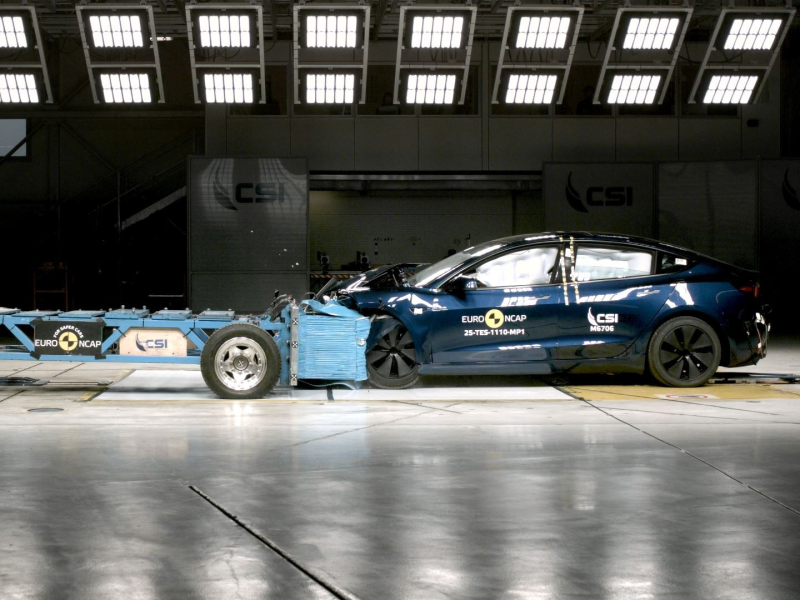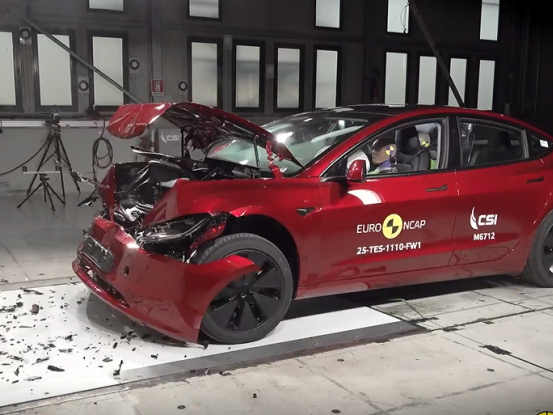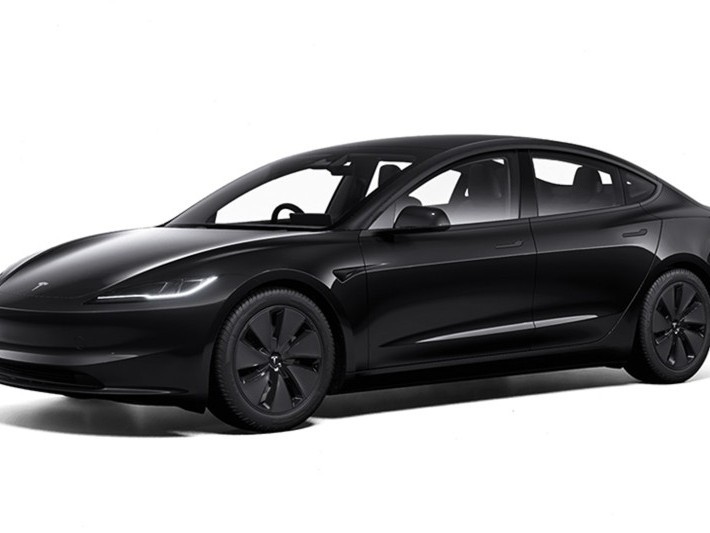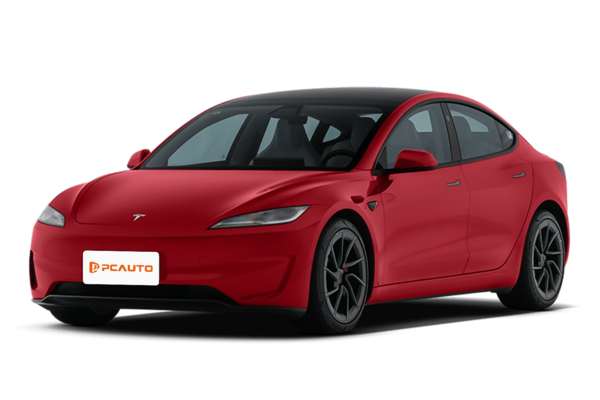Q
tesla supercharger how long to charge model 3
The charging time for a Tesla Model 3 at a Supercharger station hinges on battery capacity and charging power. Typically, you're looking at around 25 to 30 minutes to get from 10% to 80% charge, while a full charge might take 40 to 50 minutes. Of course, this can vary depending on the battery's condition, ambient temperature, and the station's power output—like the V3 Superchargers that can hit up to 250kW.
Here in Malaysia, Tesla's Supercharger network is mainly concentrated in major cities like Kuala Lumpur and Penang, and the charging speeds are on par with global standards. But if you're planning a long road trip, it's smart to map out charging stops using your car's navigation or the mobile app. The hot weather here can nudge battery efficiency down a bit, so better to be prepared.
Tesla also offers Destination Chargers, usually at hotels or malls. These are slower, around 11kW, but perfect for topping up while you're parked and going about your day. Model 3 owners can keep their charging game strong by regularly updating the car's software, which often includes optimizations. And don't sleep on the "Battery Preconditioning" feature—it kicks in automatically when you navigate to a Supercharger, warming the battery up to the ideal temp for faster charging.
A quick heads-up though: hammering the Supercharger all the time might take a tiny toll on long-term battery health. For the best battery life, mix in some home slow charging with the fast stuff when you need it.
The EV infrastructure scene in Malaysia is growing fast, too. Beyond Tesla's own stations, more third-party chargers are popping up that work with Teslas, so you've got options to keep you juiced up on the go.
Special Disclaimer: This content is published by users and does not represent the views or position of PCauto.
Related Q&A
Q
What Segment is Tesla Model 3?
The Tesla Model 3 falls into the D-segment category (also known as the "mid-size car" or "Executive Car" niche). This segment typically includes mid- to high-end models with a body length of around 4.6 to 4.9 meters and a wheelbase of 2.7 to 2.9 meters. Its competitors encompass traditional luxury brand models like the BMW 3 Series and the Mercedes-Benz C-Class.
In the Malaysian market, the Model 3 has become a key choice for local consumers to access high - end electric vehicles, thanks to its advantages in electrification technology (such as a range of up to 491 kilometers under the WLTP standard on a single charge) and intelligent features (like Autopilot assisted driving). Notably, the Malaysian government offers preferential policies such as exemption from import duties for electric vehicles, making the Model 3 more price - competitive locally.
The D - segment cars, with their moderate body size (for example, the Model 3 is 4,720mm long), combine flexibility and space practicality on Malaysian city roads, making them particularly suitable for congested urban environments like Kuala Lumpur. Other electric options in the same segment include the BYD Seal and the Hyundai Ioniq 6. However, the Model 3 still maintains a significant edge, thanks to Tesla's well - established charging network (12 Supercharger stations have been deployed across Malaysia).
Q
What is the Reslae Value of Tesla Model 3?
The Tesla Model 3 has a relatively high second - hand resale value in Malaysia. This is mainly due to its brand influence, the maturity of electric vehicle technology, and low maintenance costs. According to market observations, the Model 3 can still retain about 60 - 70% of its residual value after three years of use, which is better than many fuel - powered vehicles in the same class. This is related to its long battery life, continuous software updates, and the improvement of charging infrastructure.
For Malaysian consumers, the tax - exemption policy for electric vehicles further reduces the cost of purchasing a car, indirectly increasing the demand in the second - hand market. In addition, Tesla's global unified pricing strategy reduces price fluctuations, making the second - hand car prices more stable.
If you're considering buying a Model 3, it is recommended that you pay attention to the battery health and warranty period, as these factors can significantly affect the resale value. Meanwhile, the gradually expanding charging network in Malaysia also makes the use of electric vehicles more convenient, which will help maintain its second - hand market performance in the long run.
Q
What is the PCD Size of Tesla Model 3?
The PCD (Pitch Circle Diameter) of the Tesla Model 3 is 5x114.3 mm. This means that its wheels have 5 bolt holes, evenly distributed on a circle with a diameter of 114.3 mm. This is a common specification for many modern cars, especially widely used in Japanese and some European models. For Malaysian car owners, it's very important to know the PCD size because it's a key parameter when replacing wheels or upgrading the braking system, ensuring that the new wheels match the original vehicle perfectly. Additionally, the PCD size also affects the vehicle's handling and safety. An incorrect PCD may lead to the wheels not being installed properly or vibrations during driving.
The wheels of the Tesla Model 3 are also compatible with wheels having a center bore diameter of 64.1 mm, and the bolt thread specification is M14x1.5. These details need to be noted when purchasing modified wheels. Since the climate in Malaysia is rainy and humid, it is recommended that car owners choose high - quality wheels and regularly check the bolt tightening to ensure driving safety.
Q
Does Tesla Model 3 Support Apple Carplay?
Currently, the Tesla Model 3 doesn't support the Apple CarPlay feature. This is mainly because Tesla adheres to using its self - developed Infotainment system. This system integrates functions such as navigation, entertainment, and vehicle control, aiming to offer an integrated user experience. Although Apple CarPlay is a standard or optional feature in many other brands' models, Tesla owners can achieve similar functions through its built - in streaming services, Bluetooth connection, or the Tesla mobile app.
For users in Malaysia, Tesla's local services are gradually being improved. For example, it supports local maps and voice commands. So, even without Apple CarPlay, daily use remains convenient. If you have high requirements for in - vehicle connectivity functions, you can look into some models from other brands like BMW, Mercedes - Benz, or the local brand Proton. These models usually offer Apple CarPlay support. However, Tesla's unique advantage lies in its highly integrated system and OTA update capability, which can continuously bring new features to users.
Q
What is the Tyre Brand of Tesla Model 3?
The common original - equipment tire brands for the Tesla Model 3 in the Malaysian market include Michelin, Bridgestone, and Goodyear. The specific configurations may vary depending on the vehicle model version or production batch. For example, the high - performance version may be paired with tires like Michelin Pilot Sport 4S, which focus on grip. The selection of these international brands is to balance the instantaneous torque requirements unique to electric vehicles, low - noise performance, and range optimization. In particular, Michelin's noise - reduction technology can effectively offset the road noise that becomes more noticeable due to the lack of engine noise in electric vehicles.
It's worth noting that Malaysia has a tropical climate with frequent rainfall. Car owners can pay attention to the wet - road performance indicators of tires (such as the AA traction rating in the UTQG grade). When replacing tires, they can also consider the commonly seen Continental from Germany or locally - assembled Japanese brands like Yokohama, which also have formulations suitable for high - temperature and rainy road conditions. Tesla service centers usually recommend suitable replacement tires based on the road conditions in Malaysia. It is recommended that car owners regularly check the tire pressure to ensure it is within the numerical range required for electric vehicles, which is particularly important for maintaining the driving range.
Q
Is Tesla Model 3 a Good Car? Learn the Pros and Cons Here
As a pure - electric sedan, the Tesla Model 3 has a certain appeal in the Malaysian market. Its advantages include excellent acceleration performance, advanced autonomous driving assistance features, and relatively low daily usage costs. In particular, the electricity cost is more economical compared to that of fuel - powered vehicles, making it suitable for urban commuting in Malaysia. Additionally, the Model 3's high - tech interior design and OTA remote upgrade function also provide users with a convenient experience.
However, its drawbacks are also worth noting. For instance, given that the charging infrastructure in Malaysia is not fully popularized, long - distance travel may encounter the problem of inconvenient charging. Meanwhile, the relatively high initial purchase price and the later battery replacement cost may also make some consumers hesitate.
For Malaysian users, if their daily commuting distance is short and there are charging facilities at home or in the workplace, the Model 3 is a good choice. But if they often need to drive long - distance, they may need to plan the charging route more carefully.
Overall, the Model 3 stands out in terms of environmental protection and technology. However, before making an actual purchase, it is necessary to comprehensively consider personal vehicle - using needs and budget.
Q
What is the Width of Tesla Model 3?
The body width of the Tesla Model 3 is 1,848 millimeters (excluding mirrors). This dimension performs excellently in the urban driving environment in Malaysia. It's suitable for maneuvering through narrow streets while still offering a spacious interior. The Model 3's streamlined design not only optimizes the drag coefficient to improve the range but also incorporates an advanced layout of cameras and sensors to support the Autopilot intelligent driving function.
For Malaysian consumers, the width of the Model 3 is similar to that of common mid - sized Japanese or European sedans in the local market. However, its electric platform structure allows for higher utilization of interior space, especially in the rear legroom. Notably, since electric vehicles don't require the traditional transmission structure, the central floor is completely flat, which further enhances the seating comfort.
Against the backdrop of the increasing popularity of charging facilities in Malaysia, the Model 3's compact size and efficient energy consumption make it an ideal choice for urban commuting. Meanwhile, its high - tech interior and OTA remote upgrade function also meet the preferences of the local young consumer group for smart cars.
Q
What is the Road Tax Price of Tesla Model 3? How to Calculate?
In Malaysia, the road tax price for the Tesla Model 3 is calculated based on the electric vehicle's motor power (kW), rather than the engine capacity of traditional fuel-powered vehicles. This is a special policy implemented by the Malaysian government for electric vehicles. According to the current regulations, the formula for calculating the road tax for electric vehicles is: a charge of RM20 per kilowatt (kW). For example, the rear - wheel - drive version of the Tesla Model 3 has a motor power of 208kW, so its road tax would be 208 x RM20 = RM4,160. The high - performance all - wheel - drive version has a motor power of 377kW, and its road tax would be 377 x RM20 = RM7,540.
It should be noted that electric vehicles in Malaysia enjoy road tax exemption benefits. As of the end of 2023, the government has temporarily waived the road tax for electric vehicles. Therefore, currently, Tesla Model 3 owners do not need to pay road tax. However, future policies may be adjusted, and it is recommended to follow the latest announcements from the Malaysian Ministry of Transport.
In addition, electric vehicles in Malaysia also enjoy preferential policies such as import tax and consumption tax exemptions. These policies aim to encourage more people to choose environmentally friendly vehicles and reduce carbon emissions.
If you are considering buying a Tesla Model 3, apart from the road tax, you can also learn about practical information such as the distribution of charging facilities and the installation of home charging piles to better plan your vehicle - using life.
Q
What is the Second Hand Price of Tesla Model 3? Check Used Price Here
In Malaysia, the price of used Tesla Model 3s is influenced by factors such as the vehicle's age, mileage, configuration, and condition. Currently, the price range is approximately between 120,000 and 180,000 Malaysian ringgit, depending on the specific circumstances of the vehicle. For example, a 2020 standard - range version with low mileage might cost around 120,000 ringgit, while a well - conditioned 2022 long - range or performance version could reach about 180,000 ringgit.
When buying a used electric vehicle, it's advisable to check the battery's health status and the remaining warranty period. Tesla's official battery warranty usually lasts for 8 years or 160,000 kilometers, which is an important guarantee for second - hand buyers. Moreover, the Malaysian government offers tax incentives for electric vehicles, such as exemptions on import and sales taxes, which indirectly enhances the cost - effectiveness of used Teslas.
If you're considering buying a used Model 3, it's recommended to go through official certified channels or reputable used - car dealers. This ensures that the vehicle has undergone professional inspections and comes with a complete warranty service. Plus, you'll enjoy a more transparent transaction process.
Q
What is the Tyre Pressure of Tesla Model 3?
The recommended standard tire pressure for the Tesla Model 3 is 2.9 to 3.1 bar (42 to 45 psi). The specific values may vary slightly depending on the vehicle configuration or tire model. Owners can find the official recommended values on the label of the door frame or in the vehicle manual. In Malaysia, where the climate is hot, the tire pressure will increase slightly as the temperature rises. It is recommended to check the tire pressure at least once a month, especially before long - distance driving, to ensure driving safety and energy - efficiency. Using a Tire Pressure Monitoring System (TPMS) can monitor the tire pressure status in real - time. If the tire pressure is too low, it will increase tire wear and energy consumption; if it is too high, it will affect the grip and comfort. It's worth noting that for electric vehicles, due to the special distribution of battery weight, maintaining the correct tire pressure is particularly important for the range performance. At the same time, it is recommended to choose the original - certified tires to meet the vehicle's performance requirements.
Latest Q&A
Q
Is the 2020 Volvo XC90 safe?
The 2020 Volvo XC90 shines when it comes to safety. It's packed with a ton of active and passive safety tech, including things like City Safety, automatic emergency braking, lane keeping assist, blind spot monitoring, and even automatic cross-traffic braking. All this stuff really helps cut down on accident chances. The XC90 scored a five-star rating in Euro NCAP crash tests, which says a lot about how well it protects passengers. The body's built with high-strength steel, so it soaks up and spreads out crash energy effectively. On top of that, it comes standard with seven airbags, including a knee airbag, giving everyone inside solid protection. What's cool is that Volvo has always made safety its core brand value—their safety tech has been tested over the years, so you know it's reliable. If safety is a top priority for you, this is a solid pick. When you're shopping for a luxury SUV, besides brand and features, safety should be a big factor too. After all, it directly affects you and your family's lives.
Q
Is the XC90 made in China?
The Volvo XC90 isn't currently produced in China. Its main production line is at the Torslanda Plant in Sweden, which supplies global markets, including right-hand drive models. While Volvo does have a manufacturing facility in Daqing, China, that builds some models, the XC90 isn't among them. For consumers, knowing where a vehicle is made can offer insights into production standards and supply chain characteristics. For instance, models from the Swedish plant adhere to Europe's stringent manufacturing processes and environmental requirements. Additionally, as a global luxury brand, Volvo implements a unified quality control system across all its factories, ensuring that safety and reliability meet the brand's standards, regardless of production location. It's worth noting that when shopping for a luxury SUV, beyond the country of origin, factors like powertrain options, intelligent driving assistance systems, and after-sales warranty policies often better reflect a vehicle's overall value than just where it's built.
Q
How much is a 2020 Volvo XC90 worth?
The current used car price for a 2020 Volvo XC90 ranges from approximately RM200,000 to RM300,000, depending on the vehicle's condition, mileage, trim level, and whether it's still under the original factory warranty. The higher-spec T8 plug-in hybrid models or those equipped with the Polestar performance upgrade package typically cost 10% to 15% more than the standard T5 or T6 versions. This SUV is known for its Scandinavian luxury design, standard-fit City Safety active safety system across the range, and spacious 7-seat layout. It holds its value better than comparable European SUVs in the used market, though it's important to check for complete service records—especially since maintenance costs for the air suspension and hybrid system can be relatively high. Before purchasing, it's advisable to check the vehicle history report through Volvo Selekt's official certified pre-owned channel or commission a third-party inspection agency to assess the mechanical condition. Competitors in the same price bracket, such as same year BMW X5 or Mercedes-Benz GLE models, are similarly priced, but the XC90 stands out with its safety features and use of eco-friendly materials, making it ideal for buyers prioritizing family travel safety.
Q
Is the 2020 Volvo XC90 a good car?
The 2020 Volvo XC90 is a luxury SUV with excellent all-around performance. Its Scandinavian minimalist design language, paired with high-quality interior materials, creates a unique premium atmosphere. Safety has always been the core strength of this vehicle, with the City Safety system as standard across the range, including features like automatic emergency braking and lane keeping assist. It consistently earns top ratings in third-party crash tests. In terms of powertrain, it offers three options: T5, T6, and T8. The T8 plug-in hybrid version balances eco-friendliness and performance, with an all-electric range of about 40 kilometers, ideal for daily short commutes. The space layout is flexible and practical; the three-row seat version can meet family travel needs, though the third row is more suitable for children or short trips. It's worth noting that the maintenance costs for this car are relatively high, especially the hybrid system which requires professional technicians. Its residual value in the used car market is decent but not as strong as some German competitors. It's recommended to check the specific vehicle condition and maintenance records through official channels before purchasing. This car is particularly suitable for consumers who value safety and understated luxury.
Q
How long will a 2018 Ford Ranger last?
The lifespan of a 2018 Ford Ranger largely depends on maintenance and driving habits. With regular use and proper upkeep, it can easily hit over 300,000 kilometers—think 15 years or more on the road. The 2.2L and 3.2L diesel engines in this pickup are known for their durability, but you’ve got to stick strictly to the 10,000-kilometer oil and filter change intervals. Keeping the Diesel Particulate Filter (DPF) clean is especially critical for long-term reliability. I’d recommend focusing on undercarriage rust protection too, since tropical climates can speed up metal corrosion. And don’t skip regular checks on transmission fluid and the 4WD system (if equipped)—those small steps really help extend mechanical life. If you’re buying used, always dig up the full service history. Pay extra attention to past repairs on the turbocharger and fuel injection system. If it’s mostly used for short city trips, take it on the highway occasionally to help regenerate the DPF and avoid carbon buildup. In this pickup class, electronic glitches and aging rubber components are common repair items. Swapping out wear parts like suspension bushings early on goes a long way in keeping the ride quality solid.
View MoreRelated News

Tesla launches Model Y Standard in the US, removes glass roof
MichaelOct 9, 2025

Tesla Model 3 scored the highest in 2025 Euro NCAP, becoming the safest new car in Europe
AshleyJul 8, 2025

2025 Tesla Model 3: Euro NCAP 5-Star Safety Champion
LienMay 23, 2025

Tank vs Tesla: The Underbody Wins
WilliamMay 12, 2025

Want a Comfortable Long-Range Ride? Tesla Model 3 Delivers!
WilliamApr 17, 2025
View More

















Pros
Cons